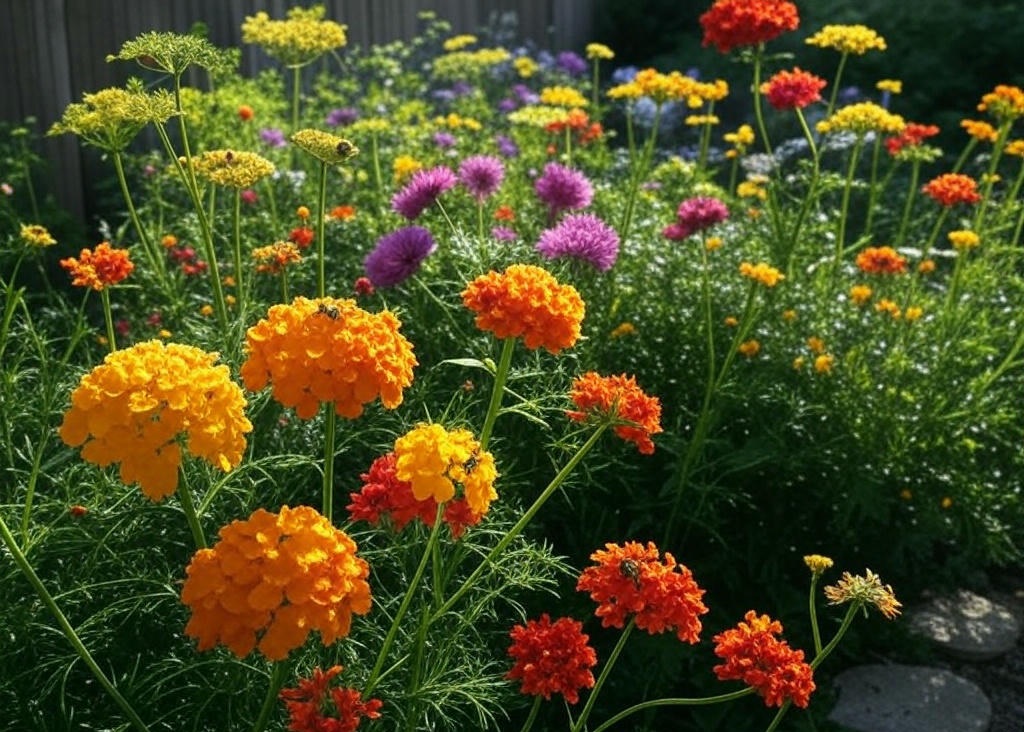Beneficial insects are nature’s little helpers, keeping pests in check and promoting a healthy, balanced garden ecosystem. By attracting these beneficial insects, you can reduce the need for chemical pesticides and encourage a thriving, sustainable garden. Here’s how you can attract beneficial insects to your garden.
Why Beneficial Insects are Important
Beneficial insects play a key role in:
- Pollination: Insects like bees and butterflies help pollinate flowers, leading to better fruit and vegetable production.
- Natural Pest Control: Predators like ladybugs, lacewings, and predatory beetles consume harmful pests such as aphids, caterpillars, and spider mites.
- Soil Health: Certain insects, like earthworms, aerate the soil and break down organic matter, improving soil health and structure.
Types of Beneficial Insects
Here are a few beneficial insects to attract:
- Ladybugs: These voracious predators feast on aphids and other soft-bodied pests, helping to keep pest populations under control.
- Bees: Bees are essential pollinators for most plants, particularly fruits and vegetables.
- Lacewings: Lacewing larvae are great at hunting aphids, thrips, and whiteflies.
- Predatory Beetles: These beetles consume pests like slugs, caterpillars, and other harmful insects.
- Butterflies: Not only do butterflies add beauty to your garden, but their larvae feed on certain garden pests, keeping the population in check.
How to Attract Beneficial Insects
- Plant Pollinator-Friendly Flowers Planting a variety of flowering plants will attract pollinators like bees and butterflies. Choose plants that bloom at different times of the year, so there’s always a food source for these insects. Good options include sunflowers, lavender, marigolds, daisies, and coneflowers. Native plants are particularly attractive to local insect species.
- Grow Nectar-Rich Plants Insects like ladybugs, lacewings, and other predators are also attracted to plants that offer nectar. Some great nectar-rich flowers to consider are thyme, fennel, dill, and cosmos. These plants attract beneficial insects looking for both food and habitat.
- Provide Shelter and Habitat Beneficial insects need shelter to hide from predators and bad weather. You can encourage beneficial insects to take up residence by:
- Planting Dense Foliage: Shrubs and tall flowers provide cover.
- Creating Insect Hotels: Consider installing an insect hotel made of twigs, bamboo, and hollow stems to attract solitary bees and other insects.
- Leaving Deadwood: Dead logs and plant material provide habitats for beetles and other beneficial species.
- Avoid Harmful Pesticides Many pesticides not only harm pests but also beneficial insects. To avoid killing helpful species, use organic methods for pest control or choose pesticides that are safe for beneficial insects. Insecticidal soap or neem oil are safer options when pest problems arise.
- Use Companion Planting Companion planting involves growing certain plants together to naturally repel pests or attract beneficial insects. For example, planting marigolds near tomatoes can repel aphids and attract ladybugs. Similarly, basil and lavender can draw pollinators while keeping away pests like mosquitoes.
- Provide Water Sources Beneficial insects need water to drink and bathe. Adding a shallow birdbath, small pond, or water dish can help keep them hydrated. Ensure the water is shallow and has rocks or sticks for insects to land on safely.
Final Tip
Creating a garden that attracts beneficial insects is about providing the right environment—food, shelter, and water—while minimizing the use of harmful chemicals. With a little planning, you can build a garden that supports these helpful insects and enhances your garden’s health and productivity. So, roll out the welcome mat for these tiny helpers, and watch your garden thrive!

Leave a Reply